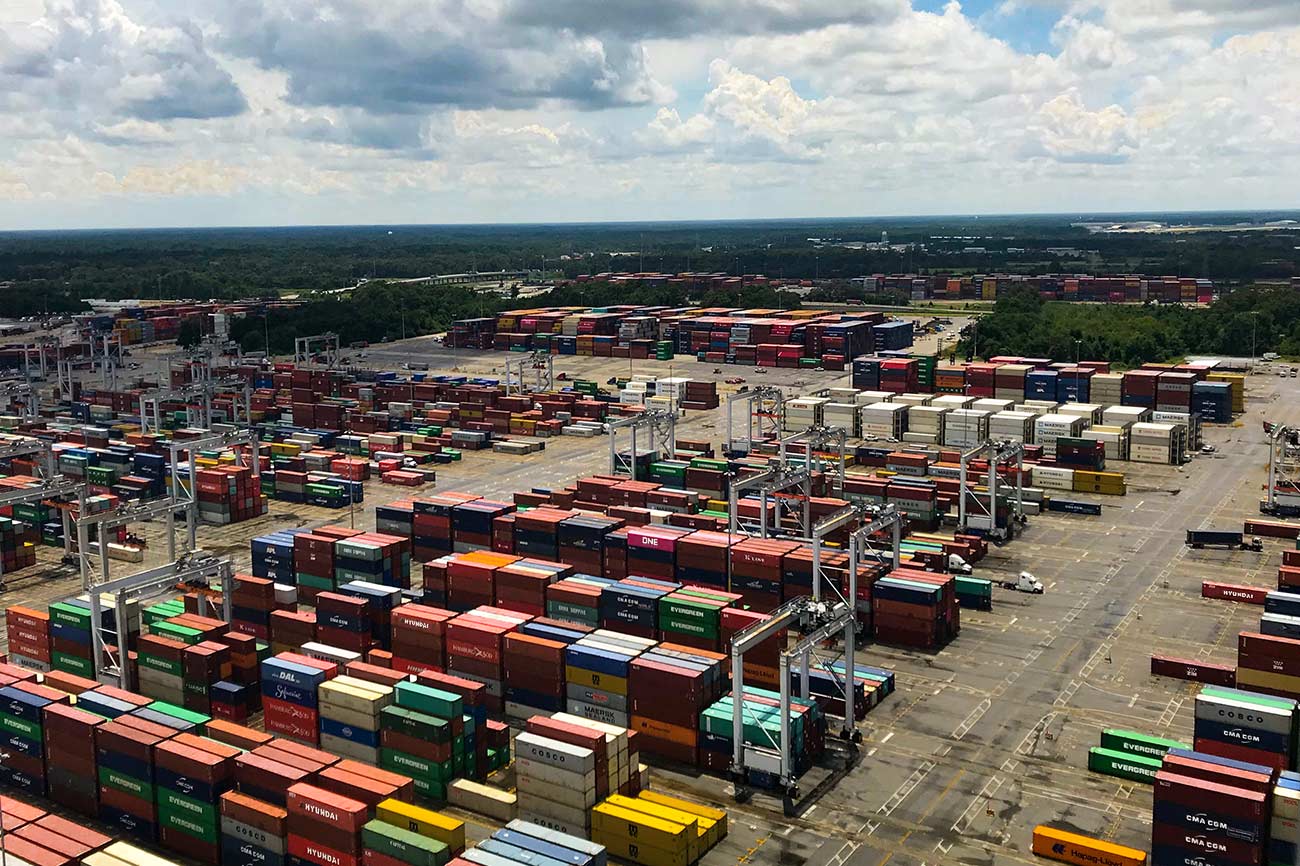
Savannah
The port of Savannah says cargo flow has been improving over the last two weeks after January import volumes were more than 20 percent higher than a year ago as retailers restock inventories and shift goods away from congested Southern California supply chains.
While the record surge in volumes bumped up average container dwell times to nearly six days, about 24 to 48 hours longer than typical for January or February, the Georgia Ports Authority (GPA) said it is working around the clock to move the cargo as quickly as possible and communicating with beneficial cargo owners (BCOs) to help resolve any supply chain problems.
Eight to 11 vessels were anchored outside Savannah’s harbor in mid-January, but that total has fallen to four in recent weeks, according to GPA.
Similar to the ports of Los Angeles, Long Beach, and New York and New Jersey, the challenges to cargo flow in Savannah stem from a sharp rise in the number of vessel calls and imports beginning at the end of last summer. Laden imports through Savannah jumped more than 20 percent in each of the last three months on a year-over-year basis, including a 22 percent jump in January, according to PIERS, a sister product of JOC.com within IHS Markit. During those three months, laden imports have risen more than 25 percent combined compared with November 2019 through January 2020.
Savannah was also the second-fastest growing port for Asian imports into the US 2020, rising 5 percent year over year. GPA CEO Griff Lynch said the port handled 181 vessel calls last month, including four extra loaders, 30 more than in January 2020. Each vessel is also unloading more cargo per call, Lynch said, so the number of containers sitting in the terminal has risen to 78,000 compared with 55,000 in a normal January.
“We're running at a rate that is about 1 million more TEU than we had last fiscal year,” said Lynch. “So it's quite an adjustment for us to make. I think the team has done a great job. We're doing everything we can to keep pace with that, but clearly no one's built to absorb that kind of growth year over year without some kind of challenges.” GPA’s fiscal year runs from July 1 to June 30.
Record import surge challenges US port flow
Supply chains across the US have been challenged by the import surge, but cargo flow through Savannah — even at its worst in mid-January — is much quicker than through Southern California. Importers have complained of some vessels being delayed as much as two weeks in Southern California, although the average delay this week is down to eight days, according to Thursday’s Signal Port Optimizer report from the Port of Los Angeles.

Photo credit: Ari Ashe.
“When you look at Los Angeles and Long Beach, look at New York and New Jersey, and look at Savannah, those are the ports that have taken on significantly more additional volume than anyone else. So you have to put it in perspective,” Lynch said. “We have a run rate of 5.6 million TEU. We haven't done it yet but that's our run rate. So it’s mind boggling stuff.”
The surge of Asian imports is hitting the West Coast complex hard, with no relief expected until late spring. Marine terminal operators told JOC.com they expect conditions to return close to normal sometime between April and June.
Out of 10 major importers contacted by JOC.com, five said cargo flows have slowed through Savannah while the other half reported no delays. Such delays aren’t unique to Savannah, as the entire US container system is under strain from delays originating in congested Chinese ports to tighter capacity at inland hubs. Two shippers told JOC.com they've been increasing their volumes through Savannah to hedge against the congestion in Southern California.
For exporters, the congestion has resulted in some earliest receiving dates (ERDs) being pushed back. After exporters began raising concerns about dropping off containers with floating ERDs, Lynch said GPA will streamline communication by updating ERDs at the same time each afternoon. Exporters and draymen will be able to view changes once rather than checking several times per day. Terminal operators set ERDs for export containers based on vessel schedules so boxes don’t take up valuable space on port property for too long, but these ERDs are often pushed back during times of increased vessel delays.
Lynch also highlighted a longer-term project to open a storage space for exporters to bring containers at least 10 days in advance, which would restore some stability for exporters even with floating ERDs. Similar to trucking companies with near-terminal yards, GPA would store containers for a daily fee until the ERD.
Thanks to the recovery in Asian imports in the second half of 2020, the GPA has upgraded its fiscal year 2021 forecast to more than 5 million TEU, which would represent a 13.6 percent increase from the 4.4 million TEU the port handled in fiscal year 2020.
“There's no question that service at the Georgia Ports Authority is running fine considering 25 percent growth [over the last three months]. What I want to be able to say is next year at this level [of growth], it's not going to be fine, it's going to be superb, Lynch said. “And it will be because we're going to continue to invest in our capacity.”
Contact Ari Ashe at ari.ashe@ihsmarkit.com and follow him on Twitter: @arijashe.
"flow" - Google News
February 12, 2021 at 02:25AM
https://ift.tt/2Z9wwol
US Ports: Savannah cargo flow improving despite record Asia import surge - JOC.com
"flow" - Google News
https://ift.tt/2Sw6Z5O
https://ift.tt/2zNW3tO
Bagikan Berita Ini















0 Response to "US Ports: Savannah cargo flow improving despite record Asia import surge - JOC.com"
Post a Comment